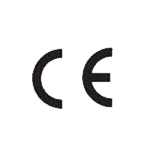| How long have fire retardant paints been around? |
| In the early 1950’s, flame retardants first appeared offering a new level of protection from fires. While they were not able to arrest fires, they were effective in slowing the development giving additional time to evacuate and more time to react to a fire. These first generation coatings were expensive, difficult to apply and foul smelling. Virtually all early flame-retardants were formaldehyde-based, extremely toxic, and carcinogenic. |
| What is an “intumescent” fire retardant paint? |
| Work began in the mid-1980’s to perfect a new genre of coatings called intumescent reactants. The term “intumescent reactant” (IR) generally defines a type of coating that expands when exposed to high temperatures or direct flame, forming a “char barrier” several inches thick. This results in an effective and durable barrier that either cuts off the fuel source a fire needs to develop or creates an insulating blanket to retard heat rise in structural steel. |
| If intumescents have been available for 20 years, why am I just now hearing about them? |
| Until recently, most intumescents met with only limited success because they had obvious deficiencies and limitations. Traditionally, intumescents have been thick, gummy, foul smelling, toxic, carcinogenic, ugly, and expensive. They have required exotic preparations like two-part epoxy primers and couldn’t be top coated – or you had to buy the manufacturer’s specially formulated top coat. They had limited shelf life and some had to be periodically reapplied, which, of course, is impossible. For example, some products that claimed to be non-toxic and non-carcinogenic still used formaldehyde and other toxic substances. Other products did not bond well to surfaces, and other coatings, like paint, did not bond well to them. The defects in the formula caused them to produce a fragile char barrier that was easily compromised. Once compromised, fire could undermine the rest of the intumescent layer, rendering it useless. That was then – AMI is now. |
| Where have intumescents traditionally been used? |
| In spite of their shortcomings, intumescents have played a valuable role in high fire risk situations such as oil refineries, offshore oilrigs, tankers, and large chemical manufacturing facilities. Due to their shortcomings, most previous intumescents had to be applied with a trowel or specialty sprayer and required a highly trained operator. In addition, they had to be applied in a thick layer (150 to 200 mils) to achieve acceptable protection. Today, with dramatic improvements in the state of the art, intumescents are in high demand for virtually any substrate in any design. |
| What’s the difference between AMI and other intumescent coatings? |
| The differences are many and they are important. With just under ten years on the market, AMI has been around long enough to be a proven product, but young enough to take advantage of significant advances in polymer technology that simply didn’t exist when other products were formulated. AMI applies like regular paint. No special tools are required. You can use a brush, roller, or standard sprayer. It smells, feels, and applies like high-quality latex paint. It has a broad range of applications since the polymer base allows it to bond tightly to many different substrates. It is non-carcinogenic and non-dermatic. It’s completely safe for use around children and pets. It has a pleasant scent, with no solvents or VOC’s. For most combustible substrates, two coats (14 to 20 mils dry) give as much protection as 150-200 mils of the old-fashioned intumescents. Last but not least, it’s very economical to use. |
| What kind of substrates can AMI be used on? |
| AMI has been proven effective on a wide array of substrates such as structural steel, aluminum, wood (both dimensional lumber and manufactured woods like OSB, MDF, Plywood, etc), and drywall, spray polyurethane foam, PVC pipe, Styrofoam or EPS and more. |
| Why does steel need to be protected from fire? |
| The application for structural steel and architectural metals, such as the skeleton of a building or the steel trusses in a roofing system, is extremely important. Although steel obviously does not burn when exposed to fire, it loses its structural integrity and collapses once the core temperature reaches prescribed limits, causing the structure to collapse as in the World Trade Center or the McCormick Place fire in 1969. AMI products reflect heat, reducing the risk of structural collapse. |
| What colors are available? |
| AMI comes in white only, but can be tinted or top coated. It is, however, a very attractive color and can be used as the finish for ceilings. Unlike like other intumescents, AMI doesn’t have a blotchy appearance and doesn’t discolor over time. |
| What if I want to add a tint to the primer? |
| AMI paint does not react to color tinting like normal latex. The most you can add is 10% by volume. At most, you will be able to get a light pastel shade when tinting. However, since it can be top coated, there’s no reason to tint it unless you are using tint to help identify layers between coats. See the following questions. |
| Do I need to use a top coat with AMI? |
| When the primer is used on any surface that is exposed to the elements or high levels of humidity or harsh vapors such as chlorine vapor, you should apply a protective top coat of enamel or acrylic. For more clarification see the answer of the next Question below. |
| What kind of top coat is recommended? |
| Any high-quality 100% acrylic latex, oil base, enamel, or latex finish coat will work. While top coating is optional, it is always a good idea – and absolutely required for exterior applications or interior applications that will be exposed to high levels of humidity, water spray, or chemical vapors like chlorine. To add color or sheen to AMI use virtually any alkyd or enamel paint as soon as the intumescent coating is completely dry. If using a roller, DO NOT RE-ROLL OR TOUCH UP until initial color coat is dry. Failure to wait for first color coat application of acrylic/latex to dry may result in the color coat smearing or “back-rolling” off on the roller. Once first color coat of latex/acrylic is dry, apply a second coat if needed. Top coating does not reduce intumescent capability. |
| How long does the primer continue to protect? |
| It will last as long as the primer adheres to the substrate and is not damaged or penetrated. |
- 1
- 2





